Guide to (Non-Osechi) Japanese Holiday Dishes
Japanese culinary tradition is rich in all different kinds of dishes. While New Year's cooking, or osechi, tends to be well-known by lovers of Japan, here we introduce some other traditional dishes that you might not be so familiar with!
By Diletta FabianiFood Fit for a Doll Princess — Hishimochi, Hina Arare & More
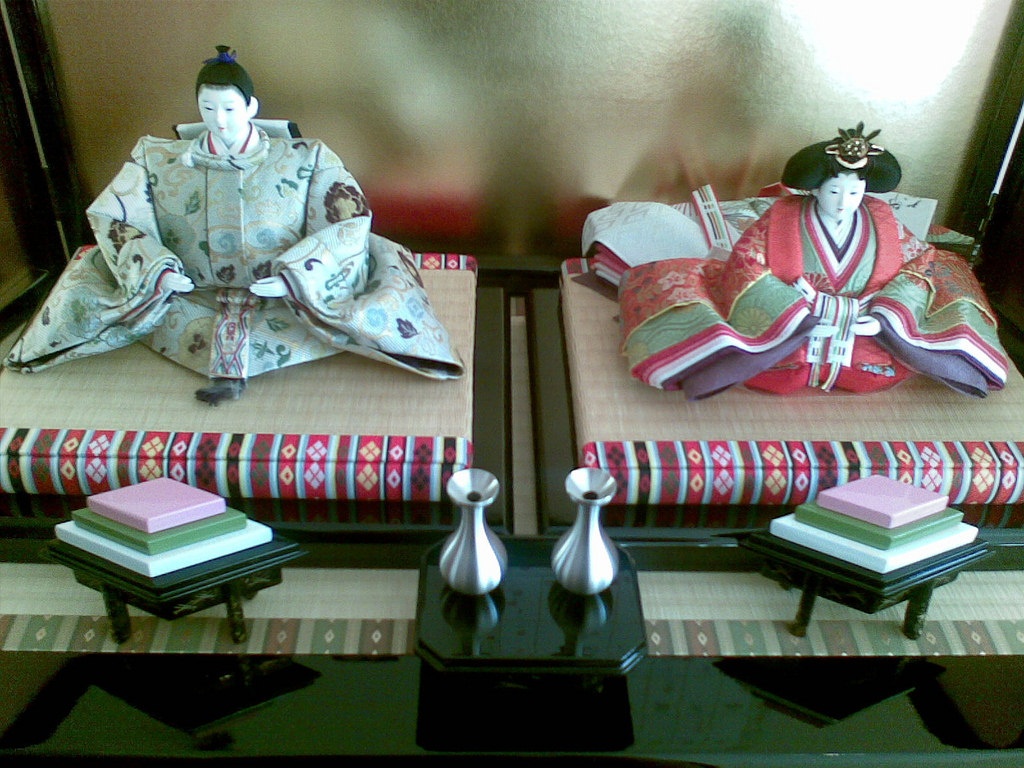
https://www.flickr.com/photos/geraldford/3306969530/in/photolist-aVFmYc-63e5Q3
Falling on March 3 each year, the Hina Matsuri is dedicated to the girls of the family. On this occasion, heirloom doll sets are displayed in the house to ward off evil spirits and grant young girls a healthy and prosperous life.
While the modern version of the Hina Matsuri only goes back about 300 years, it's believed to be related to traditions tracing as far back as the Heian Period (794-1185). Beyond the dolls, this long-lasting festivity sees its own share of unique food and drinks as well!
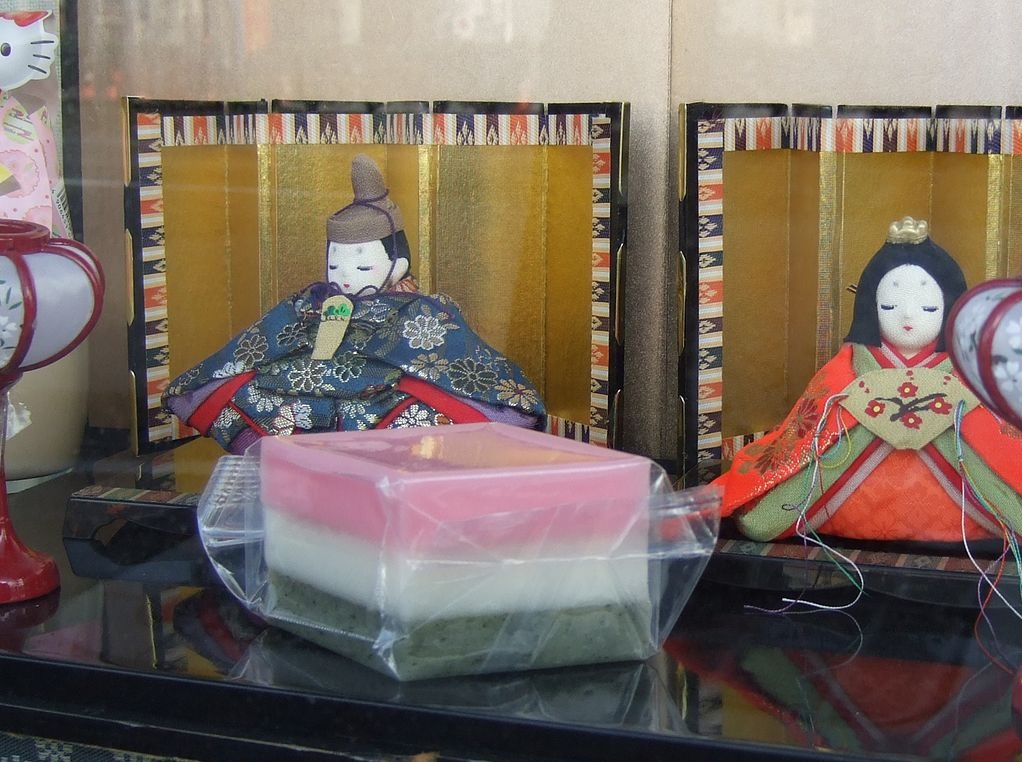
https://commons.wikimedia.org/wiki/File:Hishimochi.jpg
Hishimochi (菱餅) is a traditional sweet made of three layers of mochi rice cake (pink, white and green) and shaped like a small diamond or rhomboid. There are a number of theories behind the reason for the shape, including that it was modified from a triangular fertility shape, or that it represents the shape of the heart, or that a major warrior clan habitually prepared mochi sweets in this shape and it simply caught on.
The pink or red color represents the plum blossoms blooming during this season, and also represents health, on top of being close to the traditionally lucky red. White is associated with the snow of the waning winter and purity. Green represents life and the growth of the upcoming spring. Some parts of Japan use yellow instead of white, with yellow symbolizing the flower of hanohana, which is a harbinger of spring. You may also see versions of hishimochi with five or even seven layers.
Generally, the pink color is achieved by using gardenia fruits, while water caltrop is used for white and mugwort or hahakogusa (a type of cudweed) is used for the green tint.
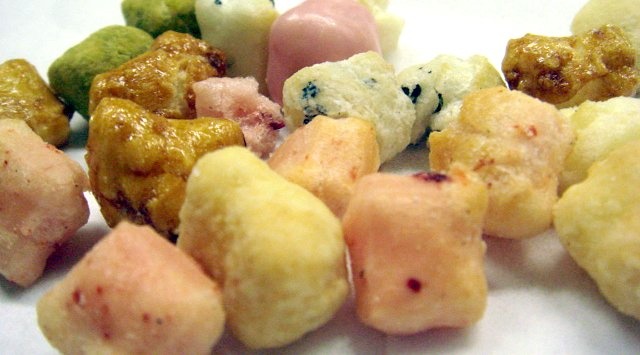
https://www.flickr.com/photos/5thluna/2301100573/in/photolist-aVFmYc-dZtG92-4vkK2P-4uPvPV-dZhJJz
Hina arare (ひなあられ) is a type of arare (a bite-sized Japanese cracker) specifically prepared for Hina Matsuri. Arare crackers in the Kansai area are generally made from sticky rice flavored with soy sauce, giving them a sweet and savory flavor, while arare in the Tokyo area consist of puffed rice that's been colored and sugared. Regardless, hina arare are further characterized by very bright colors—pink, yellow, green and white. In the old days, hina arare were made from rice crackers left over from New Year's, which seems fairly natural given the relatively short time between the two festivities.

https://id.wikipedia.org/wiki/Berkas:CA391471_org.jpg
If you don’t have a sweet tooth, another dish sometimes associated with the Hina Matsuri is ushiojiru (潮汁), a soup made from hamaguri clams. The joined halves of the shells represent a happy, tight-knit marriage in the girl's future.
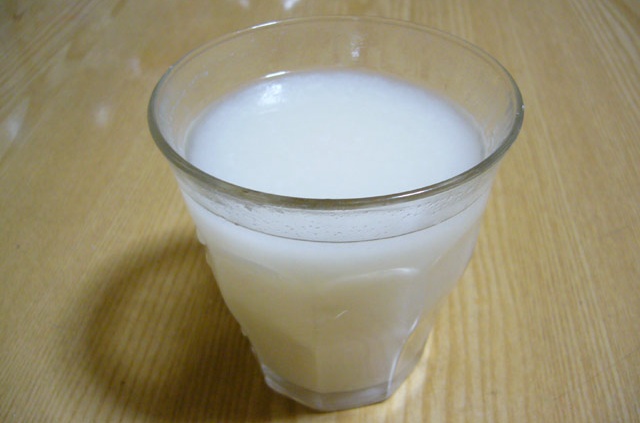
https://flic.kr/p/dcCHm
All this food is downed with shirozake (白酒, lit. “white sake”), a sweet, white sake drink containing a 8 to 9 percent alcohol. It’s made by combining rice, koji rice mold and shochu (a kind of distilled liquor) and letting it age for a month.
Another drink of choice for the younger generations can be amazake (甘酒), a rice-based beverage with a sweet and thick texture, similar to watered-down eggnog. While amazake is made from fermented rice, the fermentation process lasts only for a day, making it alcohol-free and thus a great drink for all ages (there's also a low-alcohol version, so be sure you know which kind you're offering to young ones!).
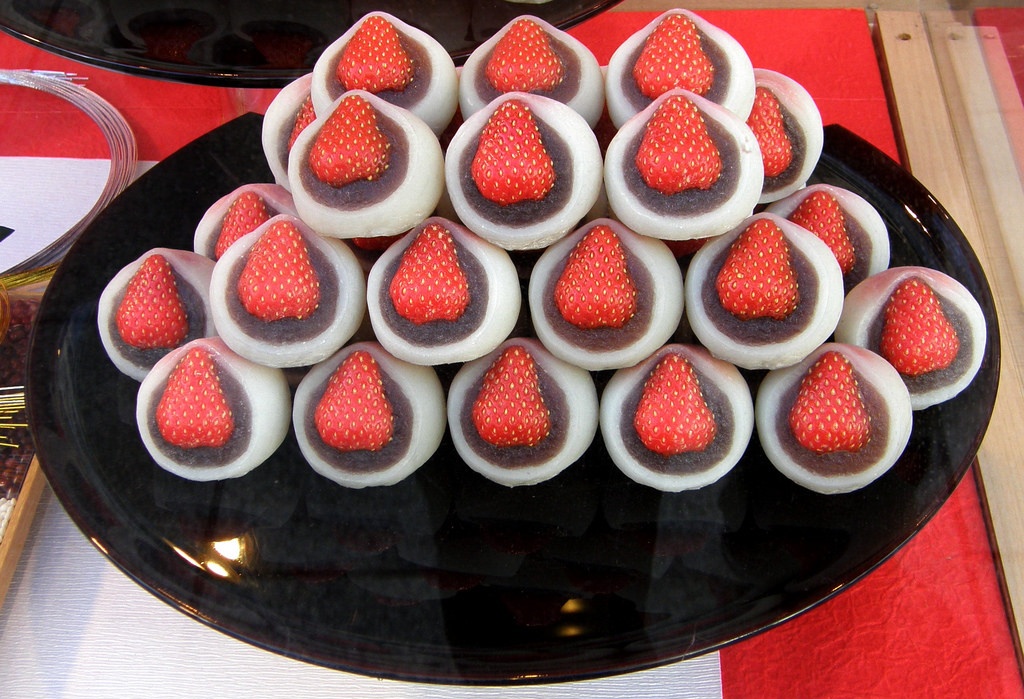
https://www.flickr.com/photos/maynard/2195080150
Finally, ichigo daifuku (いちご大福) have recently risen in popularity as Hina Matsuri food. Ichigo daifuku consists of strawberries wrapped in adzuki (red bean) paste and mochi, giving it the traditionally lucky red-and-white coloration.
Food from the Moon — Tsukimi Dango

https://flic.kr/p/beyaD
O-tsukimi (お月見, literally "Moon Viewing") is a tradition that dates back to the Heian Period (794-1185). Not so much a festival as an observance, it does not fall on a specific date, as it changes following the lunar phases. A celebration of the full moon occurs on the 15th day of the eighth month of the traditional Japanese calendar, and a celebration of the waxing moon is observed on the 13th day of the ninth month—which typically fall in September and October in the modern solar calendar.
Tsukimi honors the abundance of the seasonal harvest, and celebrations include moon viewing while drinking tea, and, obviously, eating.

https://www.flickr.com/photos/masahiko/8050268309/in/photolist-5wwKLD-GLuhBS-CeKdGm-AWG5Ug-dgnJit
The most famous Tsukimi food is undoubtedly tsukimi dango (月見団子), plain white rice dumplings. With their white and round shape they resemble the moon, and they're both eaten and used as an offering, served in a pyramidal shape. If you want to try and make your own Tsukimi dango, you can try this Cookpad recipe!
You might also encounter Tsukimi soba or Tsukimi udon, each topped with a raw egg that looks like a moon. Other Japanese seasonal foods eaten or offered to the moon during Tsukimi include edamame (green soy beans), chestnuts and taro accompanied with sake.

https://flic.kr/p/qJ1RVJ
In Japanese folklore, the markings of the moon are believed to take the shape of a rabbit pounding mochi, so rabbits are also associated with the moon. Incidentally, that's why Sailor Moon's Japanese name is Tsukino Usagi, which can be read to mean "Rabbit of the Moon" (usagi is rabbit). Moon- and rabbit-themed sweets will appear in shops and convenience stores all around Japan as Tsukimi approaches.
Luck on Your Way — Eho-maki
https://commons.wikimedia.org/wiki/File:Setsubun,bean_and_mask_of_ogre,Katori-city,Japan.JPG
Setsubun (節分) is celebrated on February 3 each year. Being the last day of winter on the Chinese calendar, on this date people perform cleansing rituals to drive out bad spirits and welcome good ones (for more details on this festivity, read our dedicated article here).
A typical dish that never fails to appear in Japanese supermarkets and convenience stores for Setsubun is eho-maki (恵方巻き). Originally from the Osaka area, eho-maki have grown in popularity around the country as national chains picked up on what was once a largely local tradition.

https://flic.kr/p/4pMiuD
Eho-maki are uncut sushi rolls, where white rice is rolled in a seaweed sheet with seven "lucky" ingredients. The number seven refers to the Seven Lucky Gods (七福神, Shichifukujin) of Buddhist tradition.
Ingredients vary by region and with family tradition, with the lucky number seven being the most important part. Your eho-maki should ideally be colorful, with some common ingredients including egg (omelette), salmon, kanpyo (dried gourd) and cucumber.
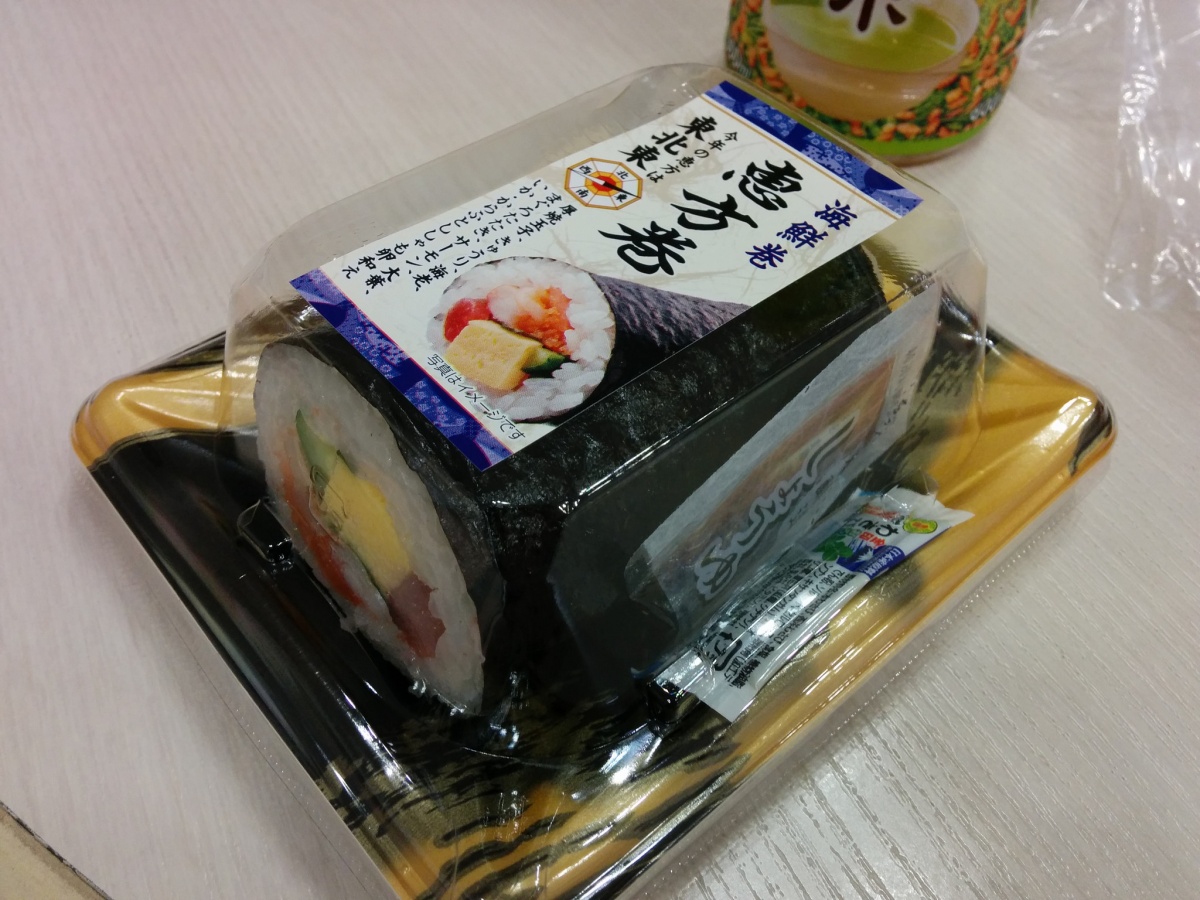
https://flic.kr/p/jUP3N9
If you think you can just grab one at the nearest convenience store and eat it, however, there's more to it than that! Eho means “lucky direction,” so you must eat your roll facing the lucky direction of the year, and also eat in complete silence (some people also make a wish first and close their eyes while eating).
The lucky directions change in a five-year cycle determined in relation to the Chinese zodiac. The lucky direction for 2018 is south-south-east, and for 2019 it will be east-north-east (for those who want some details in Japanese, you can read this Wikipedia entry).
Additionally, you should never cut your eho-maki into pieces, as that would also “cut” your fortune. You're supposed to eat it all! If you want to make your own eho-maki at home, why not try this Kikkoman recipe?

https://www.flickr.com/photos/mdid/3249802533/in/photolist-5Xb65a-5Xb5UD-5ZGFrG-4ox6pv-9eUacJ-9f7eNS-5ZGFtu-5XpAry-9eR4u4-9fo6PU-9eRkhz-9fobGw-9f8ekJ-zqUcf-jPhgZF-9f8gCy-9f8gbC-9eU4tS-9eUtoJ-9fk14t-9fjXvP-9eRcgx-9fjZBM-7wgRt2-9eR9uZ-oids-9eUrMs-9foc8q-5X4
Another tradition of Setsubun is eating a number of beans equal to your age, as beans are also thrown thrown out your door to repel evil spirits. Eating these beans is supposed to bring good luck and keep you from catching cold.
All I Want for Christmas is... Cake?
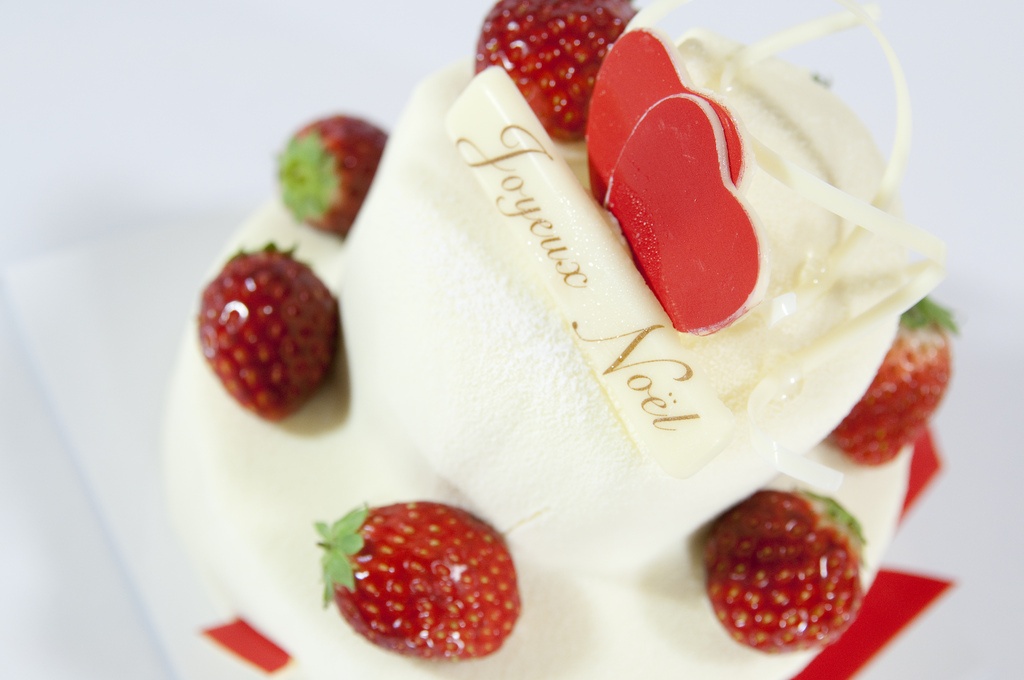
https://flic.kr/p/9WEFrZ
Finally, if you’ve ever been in Japan for Christmas, you'll have noticed a ubiquitous, white, spongy cake covered in whipped cream with strawberries on top. The Christmas Cake is traditionally eaten during… well, at Christmas, and sales first started at department stores after World War II, when celebrating Christmas became a thing in Japan.
You can read more about the story of Japanese Christmas cake in our article “Japanese Christmas Food Traditions Explained.”
Now go out there and enjoy some Japanese holidays—along with Japanese food!



